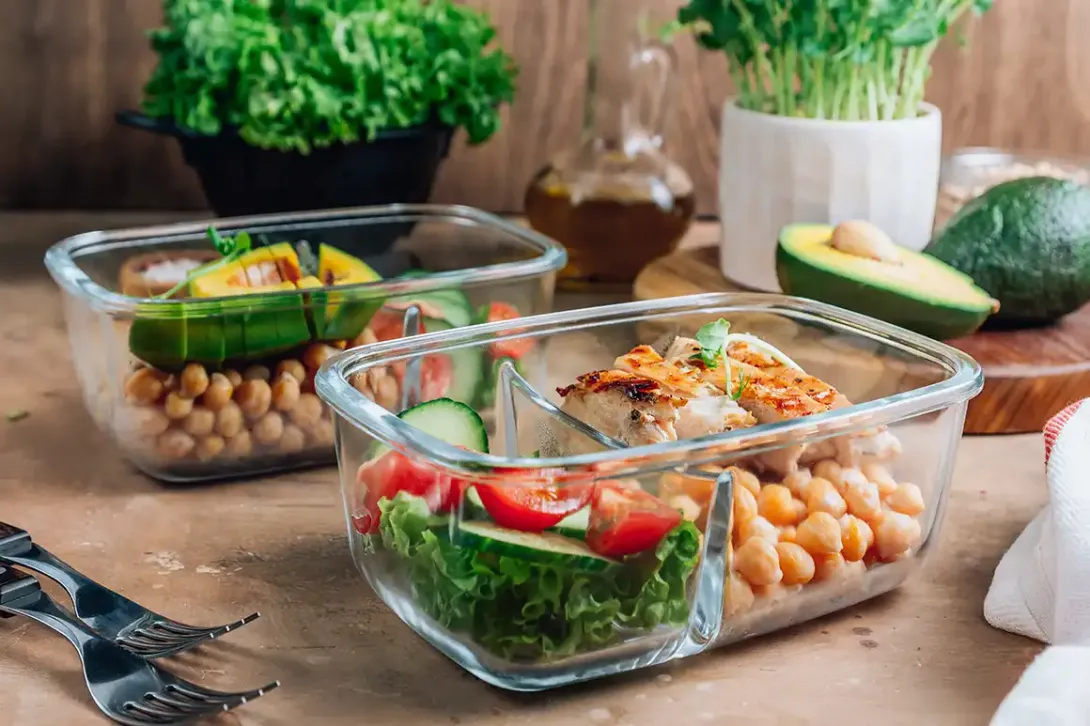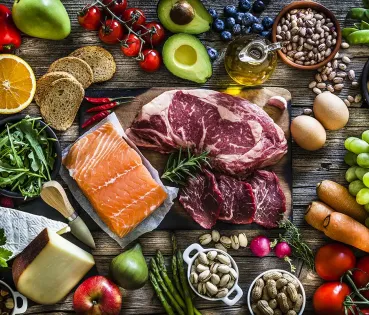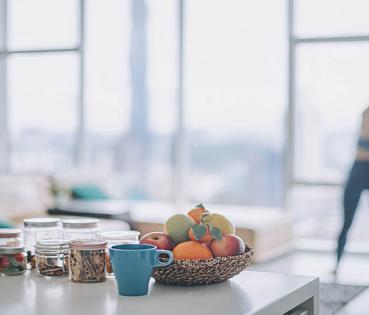
Healthy, safe food at work
When preparing your work lunches, the main food safety rules must be taken into account.
Eating out every day can be a challenge for many people. Preparing food to take with you is a solution that allows for a healthy, conscious diet to be maintained. In these cases it is necessary to know what types of foods are suitable for preparing tuppers and how to prevent them from going to waste. The first point is to plan which dishes to include in the meals for every day of the week. To achieve a complete dish, the recommendation involves basing yourself on the proportions used in the plate method or Harvard plate, which tries to ensure that:
- Half of the plate contains vegetables, either raw or cooked.
- Quarter of the plate includes a protein-rich food. It is recommended to interchange between foods of animal origin, such as fish and meat and vegetable origin, such as legumes.
- The remaining quarter of the plate contains a food that is rich in carbohydrates. For example, wholegrain cereals or tubers.
Likewise, some basic hygiene rules must be taken into account when preparing the dishes;
- Wash your hands correctly before handling food, as well as the surfaces and utensils that you are going to use.
- Avoid contact between meat, fish and raw eggs with other ready-to-eat foods, whether they are raw or cooked.
How to store the food and how long it lasts in the fridge
Glass recipients with hermetic lids are the most recommended and sustainable. If plastic containers are used, they must be suitable for food, which can be checked with the presence of a symbol including a glass and a fork. Moreover, it is essential to avoid plastic recipients that are for single use and/or contain harmful substances such as bisphenol A (BPA) or phthalates.
Most cooked dishes can last several days in the fridge. Preparations with cooked meat, eggs or fish, vegetables, tubers or legumes can last up to three days when chilled. However, some foods require a more specialised handling. For example, it is not advisable to store cooked pasta or rice for more than one or two days in the fridge.
When transporting the food from home to the office, the chain of cold should not be broken with sudden changes of temperature. To do this, the tuppers should be kept in an isothermal bag as it helps to keep the foods insulated and chilled. Once at work, put the food in the fridge again until eating it. The food can be reheated in the microwave whenever indicated on the recipient with a symbol of several wavy lines.
Store cupboard basics
Having a well-stocked store cupboard at work can make meals more practical, healthy and tasty. Amongst the basic foods that can be stored are instant grains, such as quinoa or rice; tinned proteins such as tuna, sardines or tinned chicken; wheat or corn tortillas (to make wraps) and some foods that can be served to complete the dish or to snack on in a healthy way, such as dried fruit and nuts or wholegrain biscuits.
Finally, dressings are an essential complement to give flavour to your dishes. In a store cupboard, condiments such as olive oil, vinegar or soy sauce should be kept, which have a long shelf life; and spices of any type, such as salt and pepper.
Weekly menu
Below, we propose an example of a week of work lunches. All the options may be complemented with a dessert, preferably a ration of fresh fruit or a fermented dairy product (natural yoghurt or fresh cheese, for example.) Likewise, water is recommended as the main drink and on the other hand, soft drinks and other sugary drinks or that contain alcohol should be avoided.




